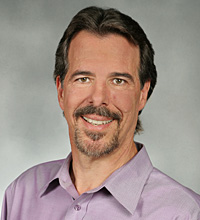ESOPS are frequently used by family companies to provide shareholder liquidity. This week’s article is a case study from Martin Staubus of The Beyster Institute at the Rady School of Management at the University of California San Diego.
In 1964, the famous television band leader Lawrence Welk went for a drive in the country north of San Diego, California planning to invest in a grove of orange trees. Instead he bought a motel and a nine-hole golf course. When he staged his TV show there, it gained instant celebrity as a tourist hotspot, eventually growing to include a theatre, more golf and vacation homes.
In the years since then, the Welk Legacy has grown into an international hospitality business, featuring four-star quality resorts not only in San Diego but also in Palm Springs, Lake Tahoe, Branson, MO, and Cabo San Lucas, Mexico, with plans under way for additional locations. These facilities have earned Gold Crown status by Resort Condominiums International and top tier Trip Advisor and Expedia rankings in each market. The company has more than 1,200 employees, with annual revenues in excess of $130 million.
Throughout this period of growth, ownership of the business has remained primarily with the Welk family, with seven of Lawrence Welk’s descendants owning interests ranging from 8 to 33 percent. Current CEO Jon Fredricks – grandson of the founder – is in charge of keeping the resorts humming and the Welk family traditions thriving.
By 2012, the Welk Company (formally, the Welk Hospitality Group) had grown into a dynamic and successful international resort business. Based on its market value, the company represented a substantial amount of wealth for the family. The challenge was that family owners had no good way of accessing that wealth in liquid form. And some in the family were indeed interested in liquidating stock.
One of the keys to their business success has been their philosophy of treating their employees like family. Employees are shown appreciation and respect, paid well and offered generous benefits. The employees have returned the love with loyalty to the Welk family and its business, taking excellent care of each guest who comes to a Welk resort.
When Jon Fredricks attended a local business seminar in 2012, he felt that he had found the ideal solution for the family’s liquidity issues when he learned about a program that would allow owners to sell stock to a retirement plan for the company’s employees – an arrangement known as an ESOP.
The ESOP in Action
So, what’s an ESOP? Very simply it is a “qualified” employee retirement plan, meaning that it qualifies for certain attractive tax advantages. It is a very distinctive kind of retirement plan because: a) it is expressly intended to accumulate and hold retirement assets in the form of the sponsoring company’s stock, and b) it is permitted to incur debt as a means of acquiring the employer stock that it will hold for the employees. The upshot of it all is that an ESOP is an attractive mechanism for enabling shareholders of privately held firms to liquidate stock and to provide a tax and governance efficient benefit to employees.
A big part of the equation is the tax treatment available through an ESOP. Conventionally, if a company agrees to redeem stock from a shareholder, the cost of the redemption is not deductible for company tax purposes. In contrast, when redemption is structured using an ESOP, the cost becomes a deductible operating expense. That’s because, with an ESOP, the funding for the redemption takes the form of a cash contribution to the ESOP, which then buys the shares being offered by the shareholder. And a contribution to fund a qualified retirement plan is a deductible expense. The result? The federal and state governments are effectively covering a substantial portion of the cost of the stock redemption. Happy shareholder; happy company.
A reassuring feature of the ESOP is that, while the employees enjoy the motivational benefit of having a financial stake in the success of the business, their participation in the ESOP does not give them any role in the control of the company. The stock going to the employees via the ESOP is actually held in a trust and it is the trustee who holds the voting rights. The trustee in turn is chosen by the company itself; it can even be the company’s CEO (indeed, Jon Fredricks is the current trustee of the Welk ESOP). By law, the fiduciary obligation of the trustee is to manage the ESOP with the aim of preserving and growing the value of the assets held in the plan.
For Jon Fredricks and the rest of the company management, there was more. They saw a great fit between the idea of employees effectively holding Welk company stock via their retirement accounts and the company’s traditional employee relations philosophy. Indeed, Lawrence Welk had started a company profit sharing plan even before the firm acquired the San Diego area property that launched them into the resort business. This would be one more way that employees would be treated like family.
The opportunity to liquidate stock at 2012 capital gains tax rates was very attractive to the company’s largest shareholder, who was interested in retiring from active involvement in the business. The other shareholders supported his sale to the ESOP, seeing this opportunity as the most attractive way to provide the desired liquidity since the stock would go into a retirement program that would motivate and reward employees, rather than going to an outside buyer. As an S corporation, the company has just a single class of stock. Since the board of directors is made up of family shareholders, getting board approval was straightforward.
By December of 2012, the ESOP was in place at the company. The family’s largest shareholder then sold a 12 percent interest in the company to the ESOP. As with all ESOP purchases, the pricing of the stock was set based on the opinion of value rendered by a professional business appraiser. In exchange for the stock, the selling shareholder received an initial cash payment along with a note from the ESOP, to be paid off over the next few years. Funding for the initial cash payment was provided to the ESOP by a tax-deductible cash contribution from the ESOP. With the ESOP a 12 percent shareholder as the result of its stock purchase, the ESOP will receive 12 percent of the earnings distributions made by the company. Because the ESOP is a tax-exempt ERISA plan, none of those earnings will be lost to taxes. This flow of untaxed cash will enable the ESOP to make its payments to the selling shareholder, meaning that, through the magic of the ESOP, the redemption of the seller’s stock costs the company only the initial tax-deductible down payment to the seller.
Not every company is a good candidate for an ESOP. The cost to implement an ESOP arrangement is likely to be at least $75,000 for the simplest of situations, and can escalate well above that sum depending on the complexity of the firm, the specific circumstances, the professional providers selected, and other factors. An ESOP is unlikely to work well for a company that is primarily an investment company, such as a firm that holds and manages real estate, where the firm’s payroll is small relative to the market value of the business. This is because ESOPs are subject to the rules of ERISA, which limit annual contributions from the company to 25 percent of payroll. And, while an ESOP can be a highly effective motivator for employees, it is unlikely to have that effect at a company where turnover is high and the workforce will not grasp the significance of stock ownership. Given these complexities, it is essential that any interested company work with an experienced ESOP expert as an advisor.
For Welk resorts, the ESOP fit very well. Financially, a key advantage was the fact that the company pays regular shareholder dividends that are sufficient to enable the ESOP to make its installment payments to the selling shareholder, so that the ESOP pays for the purchase with its own income. Equally as important for Jon Fredricks and his management team is the positive synergy between the company’s longstanding employee-friendly culture and the concept of employee participation in company ownership through their retirement plan. This arrangement aligns the interests of the Welk family and the employees, who are all interested in seeing the company thrive and enjoy financial success. As a result, gardeners take better care of their tools, hostesses go the extra mile to delight guests, and site managers encourage guests to try other Welk resort locations, not just the one they manage. All of their efforts mean that they will prosper together.
As Lawrence Welk loved to say, “Wunnerful, wunnerful.”
 Martin Staubus is the director of the Beyster Institute at UC San Diego’s Rady School of Management. The Institute works to advance the understanding and practice of employee ownership as an effective and responsible business model. Trained as an attorney, Martin has also served as a policy advisor to the US Labor Department and deputy director of the ESOP Association. He can be reached at [email protected].
Martin Staubus is the director of the Beyster Institute at UC San Diego’s Rady School of Management. The Institute works to advance the understanding and practice of employee ownership as an effective and responsible business model. Trained as an attorney, Martin has also served as a policy advisor to the US Labor Department and deputy director of the ESOP Association. He can be reached at [email protected].



